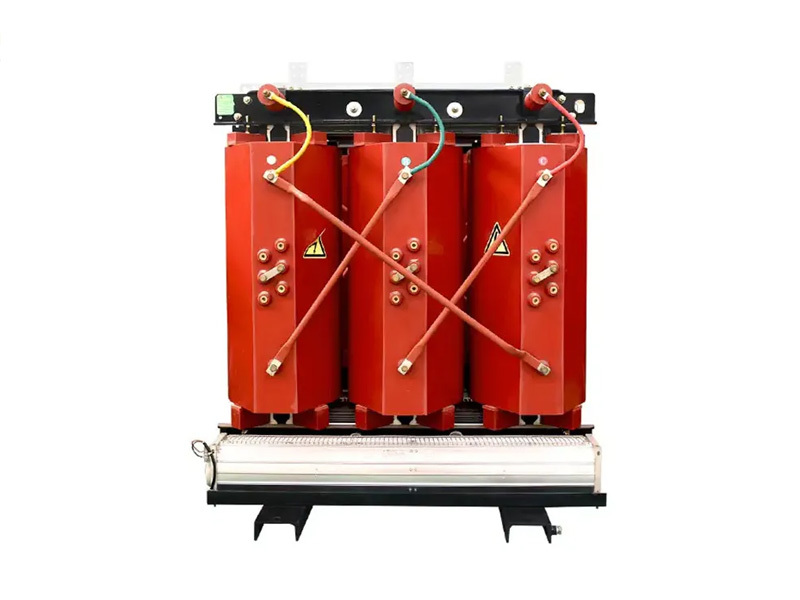He' Nan Chineng Electric Power Equipment Co., Ltd
The Role of Cast Resin Transformers in Modern Power Distribution
Jun 20,2025
The Role of Cast Resin Transformers in Modern Power Distribution
Introduction to Cast Resin Transformers
In the evolving landscape of electrical engineering, **cast resin transformers** have emerged as a critical component in modern power distribution systems. Unlike traditional oil-filled transformers, cast resin transformers utilize a solid, epoxy-based insulation system, offering numerous advantages in terms of performance, safety, and environmental impact. This article provides an in-depth look at the role of cast resin transformers, highlighting their design, benefits, applications, and future prospects.
Understanding Transformer Technology
What is a Transformer?
Transformers are electrical devices designed to transfer electrical energy between two or more circuits through electromagnetic induction. They play a pivotal role in power distribution by adjusting voltage levels to ensure efficient transmission and distribution of electricity.
Types of Transformers
There are several types of transformers, including:
- **Oil-Filled Transformers**: Traditionally used in various applications, these transformers rely on oil for insulation and cooling.
- **Cast Resin Transformers**: An innovative alternative, cast resin transformers utilize a solid epoxy resin for insulation.
- **Dry-Type Transformers**: A broader category that includes cast resin transformers, dry-type transformers do not use liquids for cooling or insulation.
The Construction of Cast Resin Transformers
Key Components and Features
Cast resin transformers consist of several essential components, including:
- **Core**: Made from silicon steel, the core is responsible for magnetic flux generation.
- **Windings**: Typically made from copper or aluminum, these conductors are wound around the core.
- **Insulation System**: The defining feature of cast resin transformers, the insulation system is composed of an epoxy resin that encapsulates the windings, providing excellent thermal and electrical insulation.
Manufacturing Process
The manufacturing process of cast resin transformers involves the following steps:
1. **Winding Preparation**: The copper or aluminum wire is wound around the core.
2. **Casting**: The wound assembly is placed in a mold, and liquid epoxy resin is poured in to encapsulate the windings.
3. **Curing**: The resin is cured at a controlled temperature to achieve the desired mechanical and electrical properties.
Advantages of Cast Resin Transformers
Enhanced Safety Features
Cast resin transformers offer significant safety benefits compared to traditional oil-filled transformers. The absence of flammable liquids significantly reduces the risk of fire and explosion, making them ideal for urban environments and sensitive installations.
Environmental Impact
With growing concerns about environmental sustainability, cast resin transformers are a more eco-friendly choice. They do not leak oil, minimizing environmental contamination risks. Furthermore, their longer lifespan contributes to lower overall waste.
Thermal Performance
The solid insulation system in cast resin transformers enables superior thermal performance. They can operate efficiently in a broader range of temperatures, making them suitable for outdoor installations and extreme environmental conditions.
Low Maintenance Requirements
Due to their robust construction and lack of liquid insulation, cast resin transformers require minimal maintenance. This translates to reduced operational costs and enhanced reliability.
Applications of Cast Resin Transformers
Commercial and Industrial Use
Cast resin transformers are widely used in commercial and industrial applications, including:
- **Shopping Malls**: To manage the power load efficiently and safely.
- **Data Centers**: Where reliability and safety are paramount.
- **Manufacturing Facilities**: To ensure a stable power supply is crucial for operational efficiency.
Renewable Energy Integration
As the world shifts towards renewable energy sources, cast resin transformers are increasingly used in solar and wind energy installations. Their ability to operate efficiently in fluctuating conditions makes them an ideal fit for such applications.
Urban Infrastructure Development
With urbanization on the rise, there is a growing demand for reliable and safe power distribution systems. Cast resin transformers play a vital role in urban infrastructure, ensuring that electricity is delivered safely in densely populated areas.
Future Trends in Transformer Technology
Advancements in Materials and Design
The ongoing development of materials used in cast resin transformers aims to enhance their performance further. Emerging technologies, such as improved resin formulations, are expected to lead to transformers with even higher efficiency and durability.
Smart Grid Integration
As the electrical grid evolves into a smart grid, the integration of advanced monitoring and control systems into cast resin transformers is anticipated. This will facilitate better load management, predictive maintenance, and overall improved efficiency.
Frequently Asked Questions (FAQs)
1. What are the primary benefits of using cast resin transformers over traditional transformers?
The primary benefits include enhanced safety, lower environmental impact, superior thermal performance, and reduced maintenance requirements.
2. Where can cast resin transformers be installed?
They can be installed in various settings, including commercial buildings, industrial facilities, renewable energy sites, and urban infrastructure.
3. How do cast resin transformers contribute to energy efficiency?
Their design allows for better heat dissipation, reducing energy losses and ensuring that power distribution is more efficient.
4. Are cast resin transformers suitable for outdoor use?
Yes, cast resin transformers are well-suited for outdoor applications due to their robust construction and ability to operate in a wide range of temperatures.
5. What is the lifespan of a cast resin transformer?
Typically, cast resin transformers have a lifespan of 25 years or more, depending on operating conditions and maintenance practices.
Conclusion
Cast resin transformers are revolutionizing modern power distribution systems by providing a safe, reliable, and environmentally friendly solution for electrical infrastructure. Their unique construction and performance characteristics make them indispensable in a variety of applications, from commercial establishments to renewable energy projects. As technology continues to advance, the role of cast resin transformers will only grow, further enhancing the efficiency and safety of electrical distribution networks. By investing in this innovative technology, we are paving the way for a sustainable energy future.










